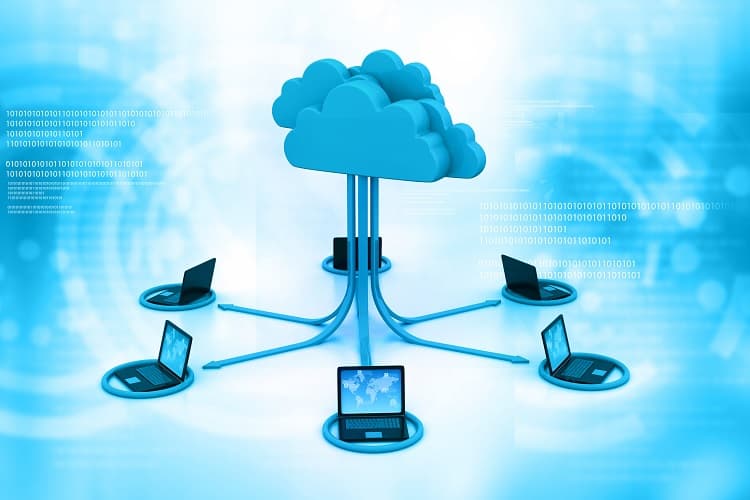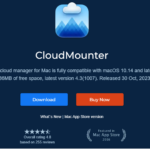Cloud computing has rapidly evolved into a transformative force, and it is undeniably the future of technology and business. This paradigm shift in computing is revolutionizing the way individuals, organizations, and industries access and utilize technology resources.
Reasons why cloud computing is the future:
- Scalability and Flexibility: Cloud computing offers unparalleled scalability. As businesses grow or require more computing resources, they can easily expand their capabilities without significant infrastructure investments. This flexibility is crucial in a rapidly changing technological landscape.
- Cost-Efficiency: Cloud services are typically billed on a pay-as-you-go or subscription basis, allowing businesses to avoid large upfront capital expenditures. This cost-efficiency enables organizations to allocate resources more effectively and invest in innovation.
- Accessibility and Remote Work: The cloud enables universal accessibility to data and applications from anywhere with an internet connection. This accessibility has become even more vital in recent times, facilitating remote work, collaboration, and mobility.
- Global Reach: Cloud providers have data centers located around the world. This global reach ensures low-latency access to data and applications, making it easier to reach customers and users globally.
- Innovation Accelerator: Cloud computing fuels innovation by providing easy access to cutting-edge technologies. Businesses can experiment with artificial intelligence, machine learning, and other emerging technologies without the need for massive upfront investments.
- Business Continuity and Disaster Recovery: Cloud services include robust backup and disaster recovery solutions. Data loss and downtime are significantly reduced, enhancing business continuity.
- Enhanced Security: Leading cloud providers invest heavily in security measures, making it challenging for individual organizations to match their security expertise and resources. This results in improved security for cloud users.
- Environmental Sustainability: Cloud computing can be more environmentally sustainable compared to traditional on-premises data centers. Cloud providers optimize resource utilization, leading to energy efficiency and a reduction in the carbon footprint of data centers.
- Big Data and Analytics: Cloud platforms are well-suited for big data processing and analytics. Organizations can harness the power of big data to gain insights, make informed decisions, and improve customer experiences.
- Machine Learning and AI: Cloud services provide the computational power and tools necessary for machine learning and artificial intelligence applications. This technology is becoming increasingly critical in various industries, from healthcare to finance.
- Internet of Things (IoT): IoT devices generate vast amounts of data. Cloud computing infrastructure can handle this data and support IoT applications, enabling smart cities, connected vehicles, and more.
- Edge Computing Integration: Cloud providers are integrating edge computing capabilities into their services. Edge computing reduces latency by processing data closer to the source, enhancing real-time performance in applications like autonomous vehicles and IoT.
- Collaboration and Communication: Cloud-based collaboration and communication tools have transformed the way people work and interact. These platforms enable seamless video conferencing, document sharing, and real-time collaboration, which is vital in the modern workplace.
- Democratization of Technology: Cloud computing democratizes technology access. Small businesses and startups can leverage the same technology resources as large enterprises, creating a level playing field.
- Evolving Business Models: The cloud has given rise to new business models, such as Software as a Service (SaaS) and Platform as a Service (PaaS), changing how software and services are delivered and consumed.
- AI-Enhanced Customer Experiences: AI-powered cloud services are transforming customer experiences by personalizing recommendations, automating customer support, and enhancing product and service offerings.
- Digital Transformation Catalyst: Cloud computing is a catalyst for digital transformation, enabling organizations to modernize their operations, streamline processes, and meet the demands of the digital age.
How to find the best IT support services?
Finding the best IT support services in Chicago is essential for businesses and individuals looking to maintain the functionality and security of their technology infrastructure. Whether you need IT support for your organization or personal devices, here are steps to help you find the best IT support services:
- Define Your Needs: Start by identifying your specific IT support needs. Determine whether you require help with network setup, hardware maintenance, software troubleshooting, cybersecurity, or a combination of these services.
- Identify the Scope of Support: Clarify whether you need ongoing support, one-time assistance, or occasional maintenance. Understanding the scope of support required will help you choose the right service provider.
- Choose the Type of IT Support: There are different types of IT support services, including on-site support, remote support, and 24/7 helpdesk support. Select the type that aligns with your needs and preferences.
importance of cloud computing in disaster recovery
Here’s why cloud computing is of paramount importance in disaster recovery:
- Data Backup and Redundancy: Cloud-based disaster recovery solutions allow organizations to replicate and store critical data in remote, geographically dispersed data centers. This redundancy ensures that data remains accessible even if the primary data center is compromised.
- Reduced Downtime: Cloud-based DR minimizes downtime by enabling rapid failover to backup systems in the cloud. This reduces the impact of disasters on business operations and customer services, helping organizations recover quickly.
- Cost-Efficiency: Traditional disaster recovery solutions often involve significant capital expenditures. Cloud-based DR offers a more cost-effective alternative, with pay-as-you-go pricing, eliminating the need for costly infrastructure investments.







